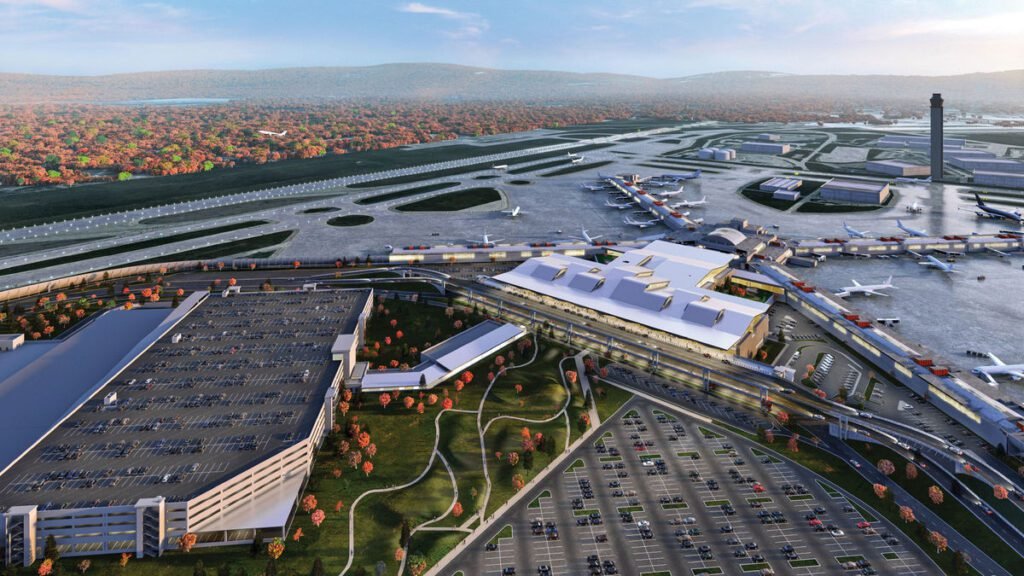Pittsburgh International Airport has positioned itself at the forefront of innovation in the aviation industry by becoming the largest airport globally to operate fully on an on-site clean energy microgrid. This significant milestone, achieved in 2021, set the stage for further enhancements, including the much-anticipated opening of a new central terminal in October and plans for an on-airport sustainable aviation fuel (SAF) refinery.
During a recent interview at the IATA Annual General Meeting in New Delhi, CEO Christina Cassotis expressed optimism about the refinery’s construction starting next year. The microgrid has established Pittsburgh Airport as energy self-sufficient, a crucial advantage when other airports grappled with power failures earlier this year, notably London Heathrow and several airports in Portugal and Spain.
The credibility gained from the microgrid is expected to facilitate partnerships and purchase agreements for the upcoming SAF facility. Cassotis outlined her vision for refining SAF within the airport’s 3,000 remaining acres in 2023. Despite a previous deal falling through, the airport secured an agreement with Avina, a New Jersey-based clean fuels developer. This innovative facility will convert alcohol into SAF using advanced Swedish technology licensed to KBR, a Houston-based firm.
The refinery aims to produce an impressive 120 million gallons of SAF annually, with 70 million gallons designated for direct use at Pittsburgh Airport. The remainder will be transported off-site and shipped via rivers to airports across the Northeast, Midwest, and Canada. "We’re going to get to final investment in the next six months," Cassotis noted. "Then it’s just a question of when do you stick the shovel in the ground."
Features of the New Terminal
As the airport prepares for the central terminal’s launch, it aims to capture attention with its innovative $1.7 billion facility. Chief Information Officer Deepak Nayyar highlighted the airport’s proprietary data platform, designed to streamline information from various systems for improved decision-making.
Leveraging data and AI, Pittsburgh Airport intends to implement predictive technology to efficiently manage tasks such as parking capacity, advising travelers on departure times, and preemptively replacing machinery. The terminal will also be equipped with segmented operating networks, a rarity in airport infrastructure. This means that, for instance, if the baggage claim network experiences a cyberattack, the airport can swiftly isolate and address the issue while maintaining other operations.
Accessibility and Aesthetics
The new terminal places a high priority on accessibility, catering to individuals with mobility impairments, caregivers, and those who are hearing- or vision-impaired. "Everything from signage height and placement to making sure people who are colorblind can distinguish contrast," Cassotis explained.
Notably, the terminal’s design aims to offer a visually appealing atmosphere, described by architect Luis Vidal as a "pavilion surrounded by natural light, wood, and terraces." Large, accessible outdoor spaces will be prominent features, making the terminal a standout in modern airport design.
"It really is beautiful," Cassotis remarked. "It reflects Pittsburgh very nicely. It almost tells you about a community you don’t know about, just through the design itself. And candidly, it makes sense. It’s been very thoughtful, and I think it’s going to change the way people feel when they travel."
Pittsburgh Airport is not just changing its own landscape; it’s setting a benchmark for the aviation industry, combining sustainability and technology in a way that prioritizes traveler experience and environmental responsibility. By championing innovations such as a microgrid and a SAF refinery, the airport is reshaping its future and the future of air travel for years to come.



